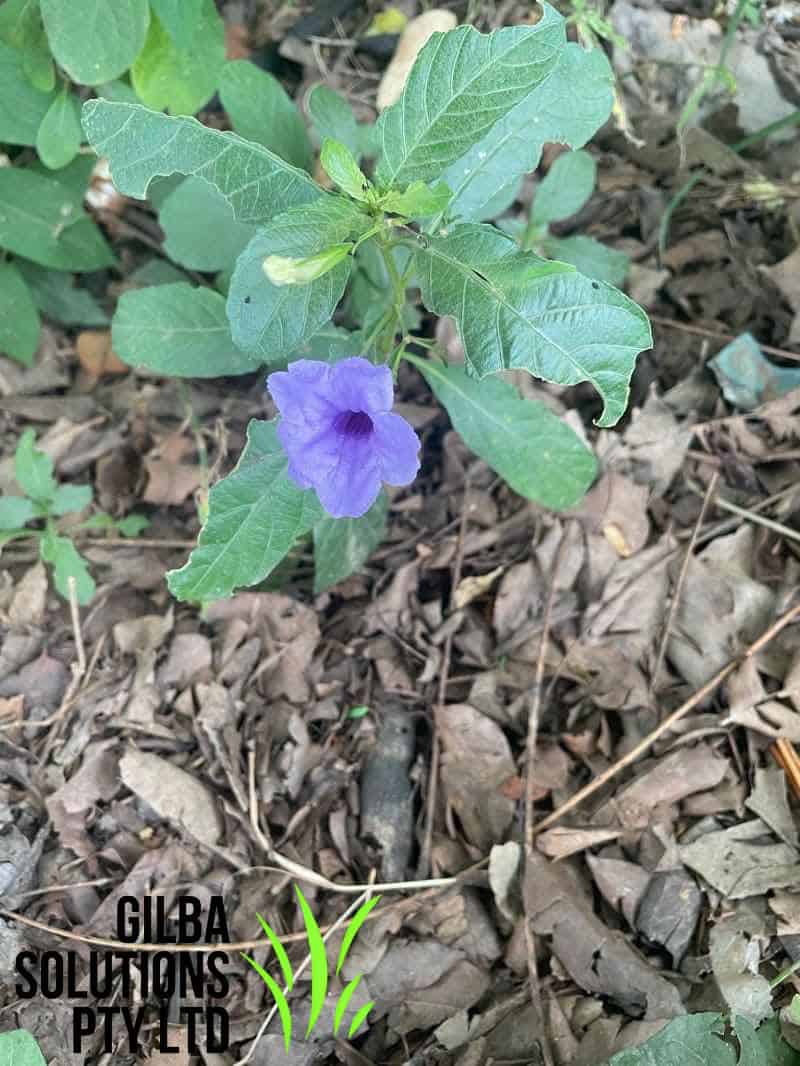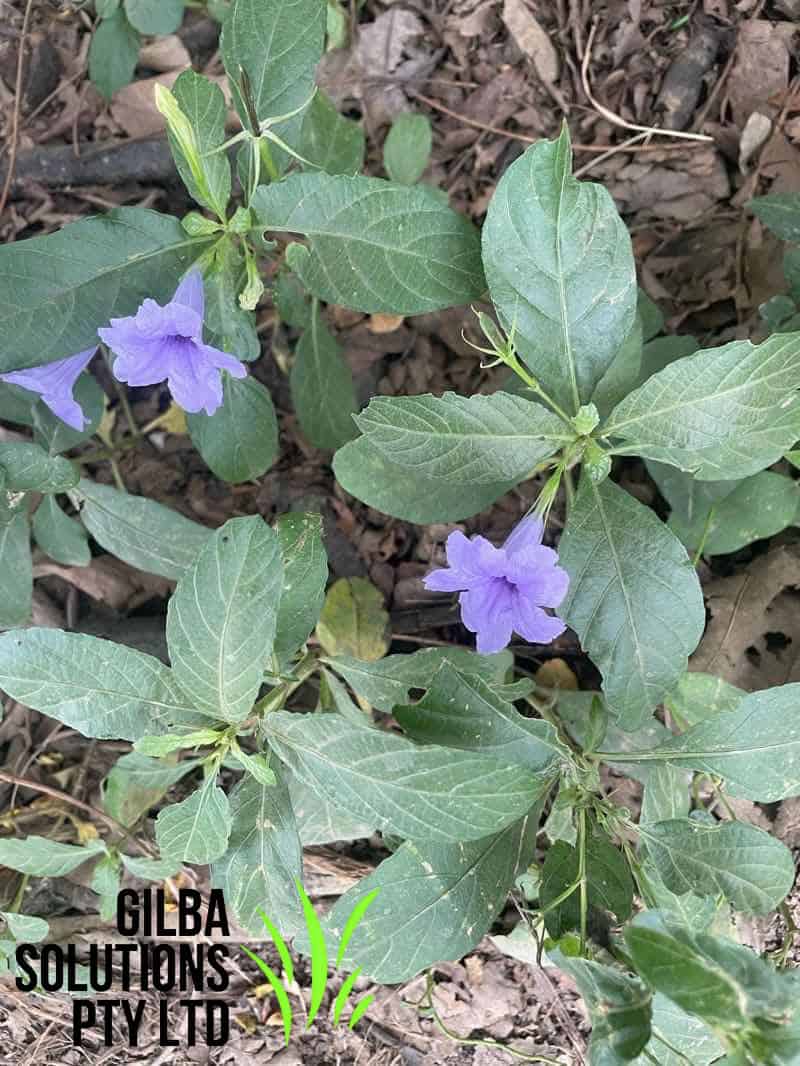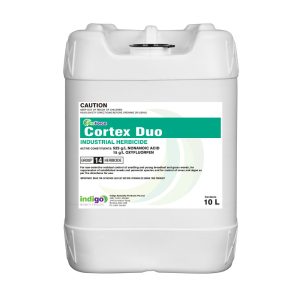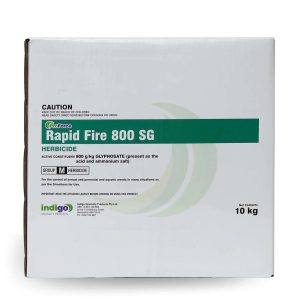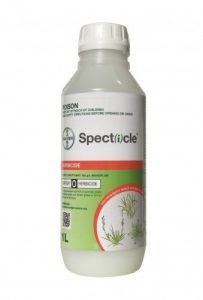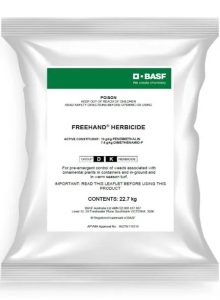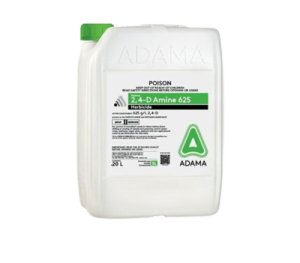Minnieroot (Ruellia tuberosa)
- Identify Minnieroot or Popping Pod.
- Know the habitat of Popping Pod.
- Know the best options to control Minnieroot or Popping Pod.
Why is Minnieroot (Ruellia tuberosa) a Problem Weed?
- Ruellia tuberosa is a highly invasive weed that thrives in seasonally dry climates, and goes into dormancy during the dry season.
- It tends to grow where other plants are less likely to grow, especially in areas with limited water availability.
- It forms dense monocultures, that outcompete native plants.
- Minnieroot is difficult to control.
- Ruellia tuberosa has a rapid seed distribution, which contributes to its invasive nature.
How to Identify Minnieroot (Ruellia tuberosa).
Category: Minnieroot (Ruellia tuberosa) is a Broadleaf (Dicot) weed.
Flower: The flowers of Minnieroot are purple to blue.
Height: Minnieroot grows to a height of up to 50 cm, but is usually around 20 cm tall.
Leaf length: The simple leaves are opposite, and egg-shaped with blades 30 to 60 mm long.
Leaf width: Ruellia tuberosa leaves are 15 to 25 mm wide.
Reproduction: Minnieroot seeds profusely, and also reproduces vegetatively via creeping underground stems and stem segments. The fruit of Minnieroot is a 2 cm long capsule, that does not have a stalk. This capsule contains about 20 seeds.
Comments: Ruellia tuberosa has a hairy stem with 4 sides, and longitudinal ridges. It has several cigar-shaped glands visible on both sides of the leaf blade.
Habitat: Minnieroot is found in moist and shady areas. It grows in grasslands and roadsides, and is often a weed in farmland.
For more information on weeds check out our weed ID Chart.
How to Control Minnieroot or Popping Pod.
There are few chemical options to control Minnieroot, so a combination of cultural and chemical control is the best approach.
- Mow regularly.
- Cut Minnieroot back by hand. Then carefully dispose of the vegetation offsite, so that it cannot re-grow. This is a long term approach, as you this only destroys the top of the Minnieroot plant. You need to repeat this process to use up its energy stores and food reserves.
Chemical Control of Minnieroot (Ruellia tuberosa).
- Control of Ruellia tuberosa is difficult.
- Under the off-label permit (PER11463) you can foliar spray Minnieroot with an aquatic Glyphosate herbicide at a rate of 100ml per 10L of water.
- Do not spray onto water and take care to avoid overspray or spray drift when you spray around native plants or in windy conditions.
- In the USA, BASF Freehand has a label for Ruellia sp.
- In Thailand work shows that Glyphosate + Indaziflam (336 + 18 g ai/0.16 Ha) gives Minnieroot control for over 60 days.
- 2,4-D is registered overseas, and you can also use this under permit PER11463.
Non Selective Minnieroot Herbicides.
You cannot use any of these on lawns or turf areas to selectively remove Popping Pod.
- Glufosinate-ammonium provides Minnieroot control for 4 to 6 weeks, but it will regrow and recover due to the limited movement of glufosinate.
- Glyphosate. You can use Glyphosate but if water quality is an issue then use ProForce Manta Ray.
These are non-selective but also have a long term residual and stop any re-growth of Minnieroot.
- Renegade. Renegade stops seed germination for up to 12 months. This reduces the need for multiple herbicide applications.
- Numchuk Quad. This gives post and pre emergent Ruellia tuberosa control for up to 12 months.
- Cortex Duo. Cortex Duo gives a rapid knockdown of Minnieroot, and residual control for up to 3 months. It is also safe to use around trees.
Table of Non Selective Herbicides for Minnieroot or Popping Pod (Ruellia tuberosa).
Product | Active Ingredient | Group | Use Rate/Ha |
Glufosinate 200 | Glufosinate-ammonium | 10 | 1 to 6 L |
Rapid Fire 800 | Glyphosate | 9 | 0.9 to 1.35 Kg |
Numchuk Quad | Terbuthylazine + Glyphosate + Amitrole Oxyfluorfen | 5 + 9 + 34 + 14 | 20 to 25 L |
Cortex Duo | Nonanoic Acid + Oxyfluorfen | 14 | 7 L/1000L |
Renegade | Bromacil | 5 | 3.5 to 6.5 Kg |

